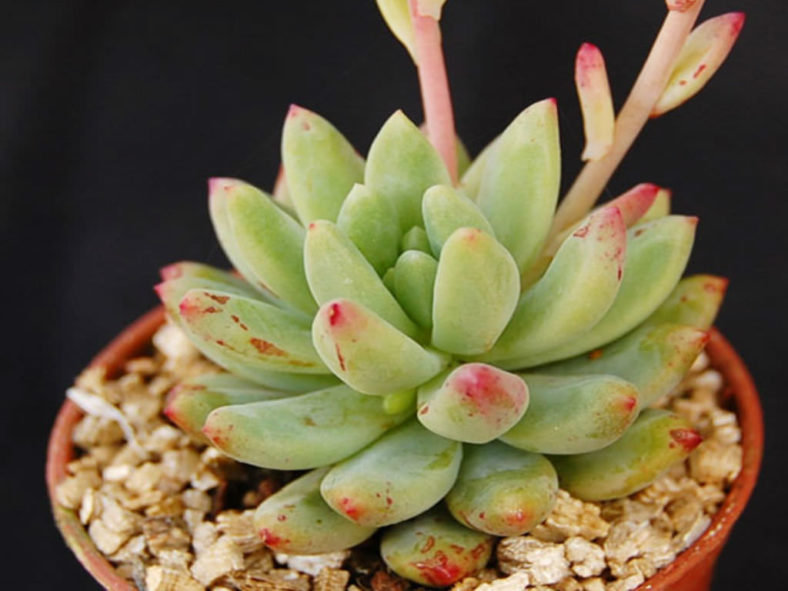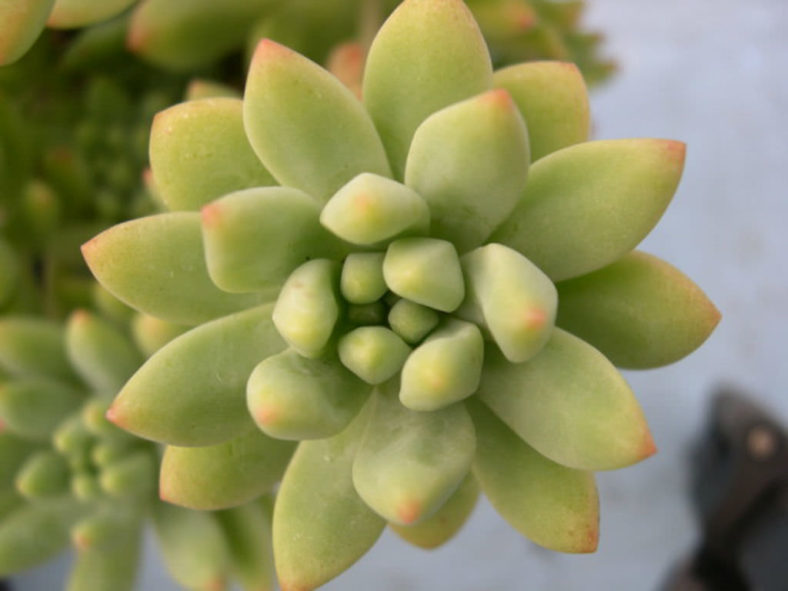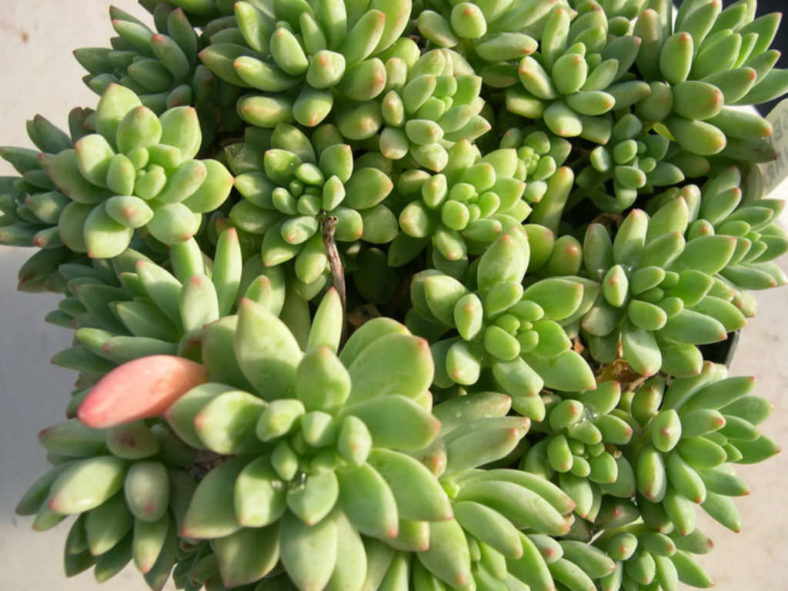Scientific Name
×Sedeveria 'Hummelii'
Synonym(s)
×Sedeveria 'Alidaea', ×Sedeveria 'Yellow Humbert'
Scientific Classification
Family: Crassulaceae
Subfamily: Sempervivoideae
Tribe: Sedeae
Nothogenus: ×Sedeveria
Origin
×Sedeveria 'Hummelii' is an intergeneric hybrid created by Ed Hummel from a cross between Sedum pachyphyllum and Echeveria derenbergii. It has been distributed as ×Sedeveria 'Yellow Humbert' for some years.
Description
×Sedeveria 'Hummelii' is an attractive succulent subshrub that forms short-stemmed rosettes of numerous yellow-green leaves with red tips. It can grow up to 4 inches (10 cm) tall, branching from the base and above. The leaves are thick and fleshy, measuring up to 1.4 inches (3.5 cm) in length.
The flowers are star-shaped with yellow petals, slightly darker on the keel, and appear on slender, leafy stalks in summer.

How to Grow and Care for ×Sedeveria 'Hummelii'
Hardiness: USDA hardiness zone 9b to 11b: from 25°F (-3.9°C) to 45°F (7.2°C).
When growing Sedum, keep in mind that Sedum plants need very little attention or care. They will thrive in conditions in which many other plants thrive, but do just as well in less hospitable areas. They are ideal for that part of your yard that gets too much sun or too little water to grow anything else. A common name for Sedum is Stonecrop because many gardeners joke that only stones need less care and live longer.
Sedum is easy to propagate. For shorter varieties, simply laying the plant on the ground where you want it to grow is usually enough to get it started there. They will send out roots from wherever the stem touches the ground and the root itself. If you want to ensure the plant starts there, add a very thin layer of soil.
You can break off a stem from taller Sedum varieties and push it into the ground where you want to grow it. The stem will root very easily, and a new plant will be established in a season or two.
See more at How to Grow and Care for Sedum.
Links
- Back to nothogenus ×Sedeveria
- Succupedia: Browse succulents by Scientific Name, Common Name, Genus, Family, USDA Hardiness Zone, Origin, or cacti by Genus
Photo Gallery
Click on a photo to see a larger version.


